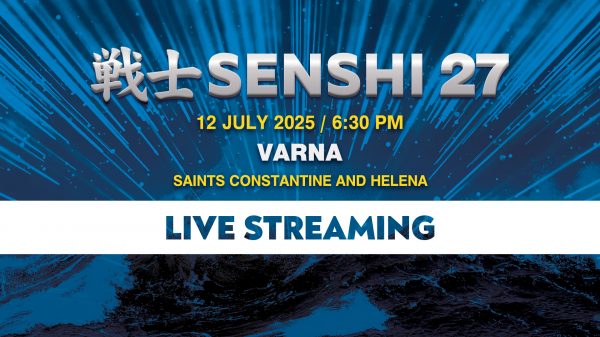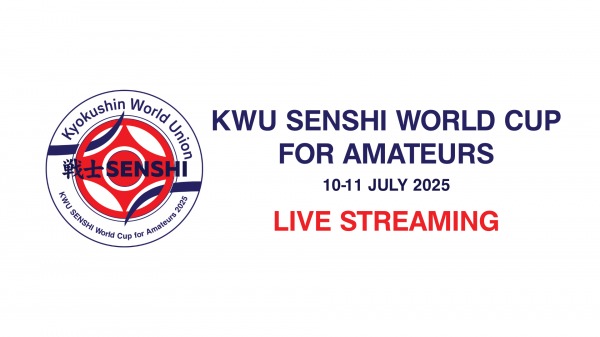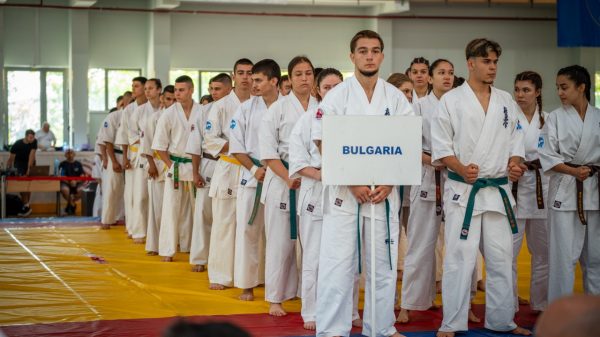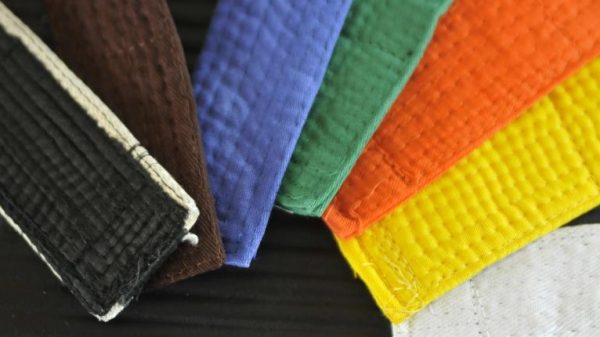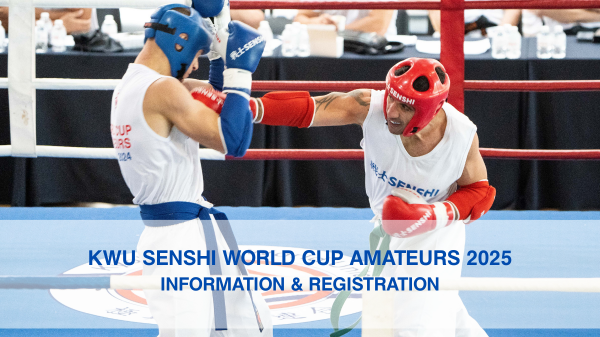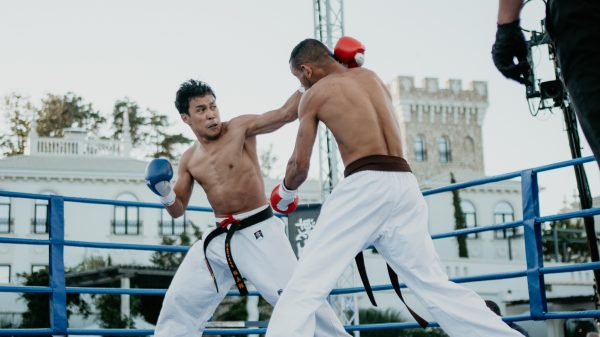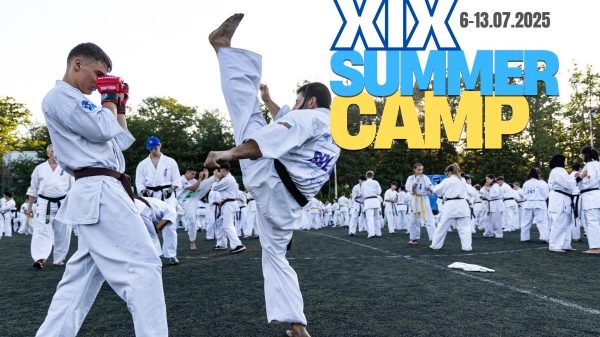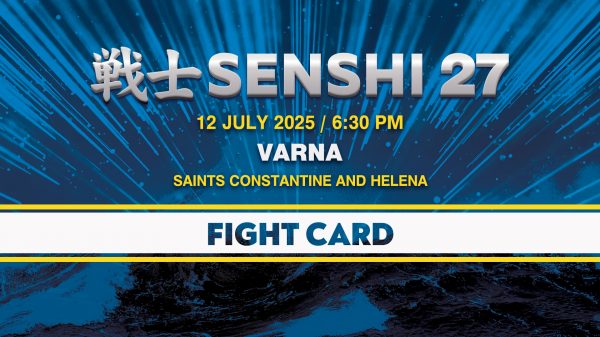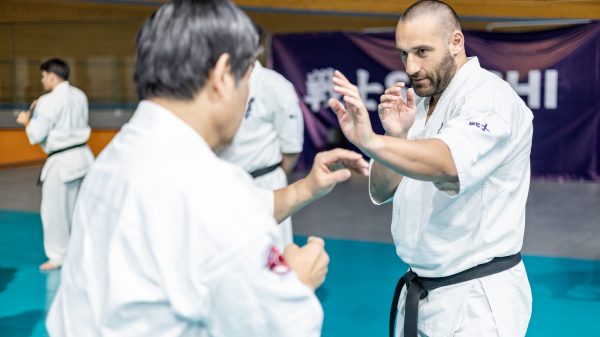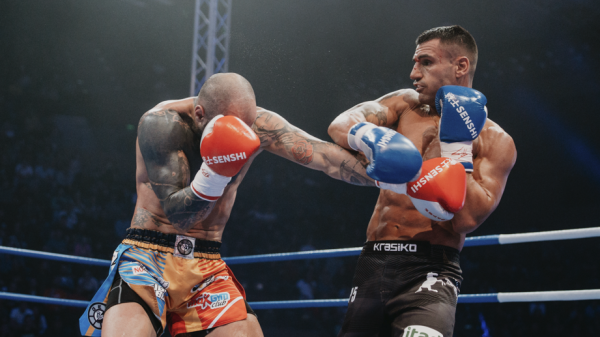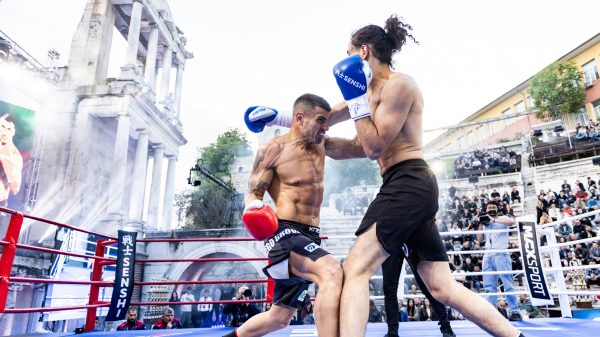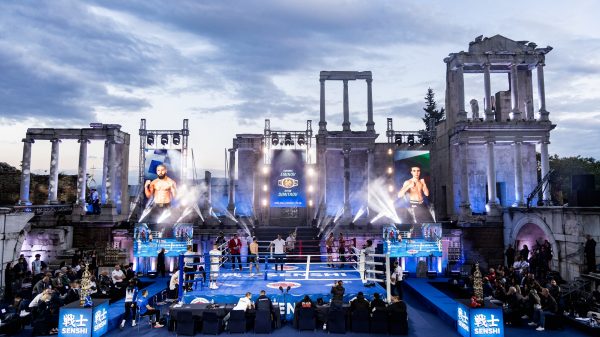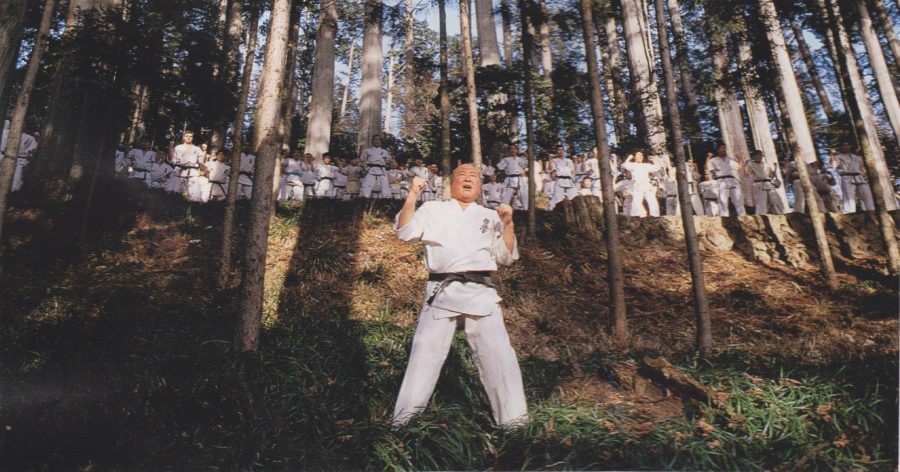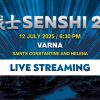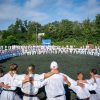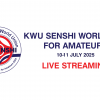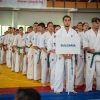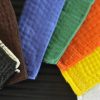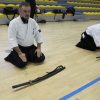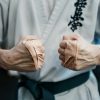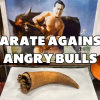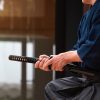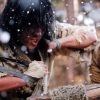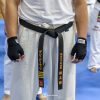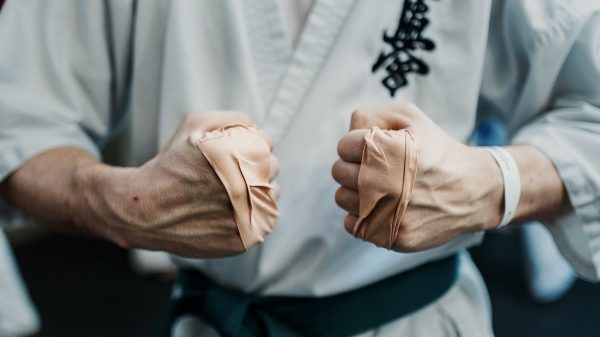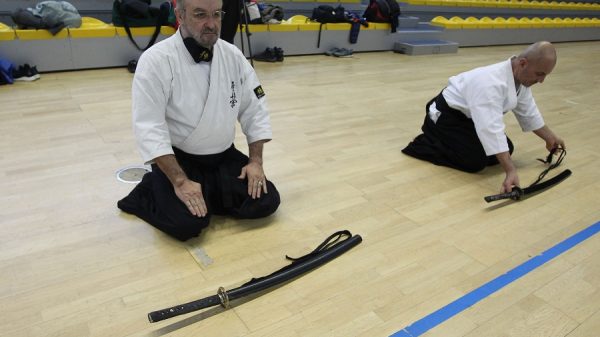Budō and Kyokushin
Budō (武道) is a Japanese term describing modern Japanese martial arts. Literally translated, it means the “Martial Way“. Budō is a compound of the root bu (武), meaning “war” or “martial,”; and dō (道) – Dao in Chinese – sometimes spelled tao), meaning “path” or “way.”
Japanese martial arts are divided into two separate and very distinct categories; Bujutsu and Budō.
Similarly to budō, bujutsu is a compound of the roots bu (武) and jutsu (術), meaning technique. Thus, bujutsu is translated as “science of war” or “martial craft.”
Budo and bujutsu have quite a subtle difference; whereas bujutsu only gives attention to the physical part of fighting (how to defeat an enemy best), budo also gives attention to the mind and how one should develop oneself.
Bujutsu is the original of the two, for lack of a better word, and are quite literally the “martial arts” of Japan, with the goal being the absolutely effective application of fighting techniques in combat.
Budō is the newer of the two categories, and traditionally there is no budo form of art without its bujutsu parent. Examples are Judo and Jujutsu, Kendo and Kenjutsu, Aikido, and Aikijujutsu, etc.
The budo is literally the “martial ways” of the Japanese fighting arts. The budo or martial ways, in contrast to bujutsu, are less concerned with the practical and realistic application of techniques in the modern age but much more focused on the perfection of the moral fiber of the individual budo student.
In essence, the goal is to translate what the student learns in the dojo and apply it to everyday life. One famous statement by Karate master, Sensei Gichin Funakoshi, founder of Shotokan Karate-do, summarizes the budo ideal clearly, “The ultimate aim of Karate lies not in victory or defeat, but in the perfection of the character of its participants.”
The martial arts historian, Donn Draeger, stated, “Budo is concerned with self-perfection, and Bujutsu is concerned with self-protection.”
To a degree, this simplifies the differences in approach, but it clearly separates the two categories.
The goal of bujutsu is not by any means the perfection of character but rather preparing the warrior for the eventuality and reality of real-life combat, with the correct technique being the difference between life and death.
A modern example might be a soldier. The modern soldier isn’t learning how to use an assault rifle for the perfection of character; he is learning how to use the weapon for combat – this is how training is approached in classical bujutsu.
From 1600 to 1850, beginning with the battle of Sekigahara gave control of Japan to the Tokugawa Bakufu. After four centuries of bloody civil wars between various Daimyo and their Samurai, a long period of peace was to follow. This led to Bujutsu, the classical martial arts practiced by the Samurai during peace. While there was no enemy during peacetime, the Samurai would continue honing their martial skills by practicing in the dojo.
In the 17th century, we saw the emergence and rapid spread of the Ryu-ha, or schools of martial arts, and the seeds of Budō were planted and established. In Kenjutsu alone, there were said to be five hundred different schools. The emphasis was on Kenjutsu or swordsmanship, as the Samurai was expected to carry a katana at all times when in public. Kenjutsu practice was carried out with the Bokuto or wooden sword.
As we approached the mid-19th century and the modernization of Japan started to take hold with the dawn of the Meiji restoration, we saw the Martial technique, or Bujutsu, transform into modern Budō.
Budō is not only about learning about and training in martial techniques. It has also been developed as a method of practicing and tempering the mind and the body in accordance with the teachings of the unity of spirit and technique and of cultivating etiquette. Budō does not only focus on physical strength, but it also focuses on self-control and discipline.
Mas Oyama and Budō
Sosai (founder) Masutatsu ‘Mas’ Oyama was heavily influenced by his Goju-ryu Karate teacher, Nei-chu So, a fellow native countryman of the teenage Yeong-eui Choi (Masutatsu Ōyama).
The defeat of Japan and the subsequent indignity of Occupation almost proved to be too much for Mas Oyama, who nearly despaired. Nei-chu So encouraged Mas Oyama to dedicate his life to Budo, the Martial Way. It was he who suggested that Oyama should retreat away from the rest of the world for 3 years while training his mind and body.
Oyama also met Eji Yoshikawa, author of the book ‘Musashi,’ a fictionalized account of the life of Miyamoto Musashi, Japan’s most famous samurai warrior. Thanks to this book and the writer, Mas Oyama began to understand the profound meanings of the Samurai Bushido Code, which ultimately shaped his own philosophy on martial arts.
Oyama became heavily influenced by the great swordsman Miyamoto Musashi (1584 – June 13, 1645), founder of the Hyōhō Niten Ichi-ryū or Niten-ryū style of swordsmanship and, in his final years, authored The Book of Five Rings (五輪の書 Go Rin no Sho), a book on strategy, tactics, and philosophy that is still studied today.
Influenced by Nei-chu So, the writing of Yoshikawa, and Musashi’s works, Mas Oyama decided to withdraw from social life and live in solitude for a period of 3 years and dedicate his time completely to the intense training of body and mind, as Musashi did in his lifetime. Oyama traveled to Minobu mountain, the same place where Musashi created Nito-ryu kenjitsu. Mas Oyama was only 23 years old at the time. In his opinion, this would be the perfect place to start the severe training of body and mind that he had planned for himself.
After returning to civilization, Oyama stated that “traditional karate” is non-contact, and while at its peak of recognition, Oyama claimed that the true way of Budo Karate was in actual physical contact.
The budo philosophy is evident in Mas Oyama’s name for his karate style, Kyokushin, which means “Ultimate Truth.” It is also reflected in the Dojo Kun and in the Spirit of Osu.
The Spirit of Kyokushin emanates from the Budo axiom,
“One thousand days of training complete a beginner.
Ten thousand days of training begins the mastery of the art.”
The training to find the Ultimate Truth is a rigorous and never-ending process for the practitioner.
It is a lifelong dedication to the Kyokushin Way.
The greeting OSU used in Kyokushin resonates with humility, gratitude, perseverance, and respect for one another.
Mas Oyama summed up his entire martial arts philosophy in eleven mottos, known as the Zayu no Mei Juichi Kajo, which are central to his teaching:
Zayu no Mei Juichi Kajo
座右の銘十一個条 – Eleven Mottos of Kyokushin
- The Martial Way begins and ends with courtesy. Therefore, be properly and genuinely courteous at all times.
- Following the Martial Way is like scaling a cliff – continue upwards without rest. It demands absolute and unfaltering devotion to the task at hand.
- Strive to seize the initiative in all things, all the time guarding against actions stemming from selfish animosity or thoughtlessness.
- Even for the Martial Artist, the place of money cannot be ignored. Yet one should be careful never to become attached to it.
- The Martial Way is centered on posture. Strive to maintain correct posture at all times.
- The Martial Way begins with one thousand days and is mastered after ten thousand days of training.
- In the Martial Arts, introspection begets wisdom. Always see contemplation of your actions as an opportunity to improve.
- The nature and purpose of the Martial Way is universal. All selfish desires should be roasted in the tempering fires of hard training.
- The Martial Arts begin with a point and end in a circle. Straight lines stem from this principle.
- The true essence of the Martial Way can only be realized through experience. Knowing this, learn never to fear its demands.
- Always remember, in Martial Arts, the rewards of a confident and grateful heart are truly abundant.
“Although it is important to study and train for skill in techniques, for the man who wishes to truly accomplish the way of Budo, it is important to make his whole life in training and therefore not aiming for skill and strength alone, but also for spiritual attainment.” ~Mas Oyama
“Always remember that the true meaning of Budo is that soft overcomes hard, small overcomes large.” ~Mas Oyama
“For a long time, I have emphasized that karate is Budo, and if the Budo is removed from karate, it is nothing more than sport karate, show karate or even fashion karate – the idea of training merely to be fashionable.
“Karate that has discarded Budo has no substance. It is nothing more than a barbaric method of fighting or a promotional tool for the purpose of profit. No matter how popular it becomes, it is meaningless.” ~Mas Oyama
Mas Oyama’s Dojo Kun (oath)
道場訓
一、 吾々は心身を錬磨し確固不抜の心技を極めること
We will train our hearts and bodies for a firm, unshaken spirit.
一、 吾々は武の神髄を極め機に発し感に敏になること
We will pursue the true meaning of the martial way so that our senses may be alert in time.
一、 吾々は質実剛健を以て克己の精神を函養すること
With true vigor, we will seek to cultivate a spirit of self-denial.
一、 吾々は礼節を重んじ長上を敬し粗暴の振舞ひを慎しむこと
We will observe the rules of courtesy, respect our superiors, and refrain from violence.
一、 吾々は神仏を尊び謙譲の美徳を忘れざること
We will follow our religious principles and never forget the true virtue of humility.
一、 吾々は知性と体力とを向上させ事に臨んで過たざること
We will look upwards to wisdom and strength, not seeking other desires.
一、 吾々は生涯の修行を空手の道に通じ極真の道を全うすること
All our lives, through the discipline of karate, we will seek to fulfill the true meaning of the Kyokushin way.
OSU!



